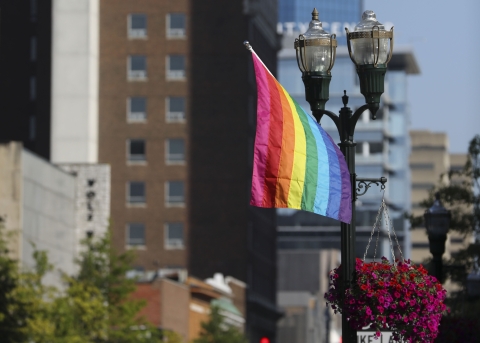
In this installment of The Bluegrass in Your Backyard, it’s all about succession (and no, not who’s in line for the throne). In the natural world, succession is simply the way the landscape changes over time. Even if you haven’t heard the term before, you’ve most likely seen it in action. Maybe you’ve gone on summer vacation, and when you come back your yard has six-inch grass and weeds that have never been there before. Or maybe you’ve driven past your childhood home and noticed the neighbor’s field is now a stand of small trees. All land goes through successional changes, whether it’s a strip of roadside grass or a national park, and it’s happening all the time.
In Kentucky, you can generally expect succession to follow about the same stages. An area starts out as bare ground, then grows grass and other plants, then shrubs, then short-lived trees, then finally long-lived trees like oak and hickory trees. So if succession is happening all the time, why isn’t Kentucky covered in oak trees? If you think back to your post-vacation yard, the answer might be obvious: Mow your yard, and you’ve reset the succession back to zero. Leave your yard alone forever, and you’ll have oak trees (or at least, your great-grandkids might).
In the yard scenario, your mower is known as disturbance. Anything that resets succession back to zero, or just knocks it back a few stages, is disturbance—and it’s not just John Deere and Cub Cadet. Other forms of disturbance are lightning strikes, fires, large mammals (in pre-settlement Kentucky, think elk and bison), livestock like cattle, and weather events. As an example, the ice storm of February 2021 was a disturbance in many woodlands of the Bluegrass. When trees fell under the weight of ice and snow, they created big open areas in the forest where small plants and shrubs can get enough sunlight to grow.
So what does this mean if our goal is to create natural areas in parks? Well, it means that nature does most of the work. In city parks and towns in general, the main source of disturbance is—you guessed it—mowers. Remove the mowers, and the land begins to change. Grass grows taller. New species of flowers begin to bloom. Leave it alone long enough, and you’ll have a woodland. But since we may not want every park to be a forest, a lot of the time we aim for a happy medium between allowing succession to do its thing VS using disturbance (AKA mowing) as a pause button. Be sure to tune in next time to learn how we use disturbance to create the specific habitats that improve our parks for wildlife and people both!



